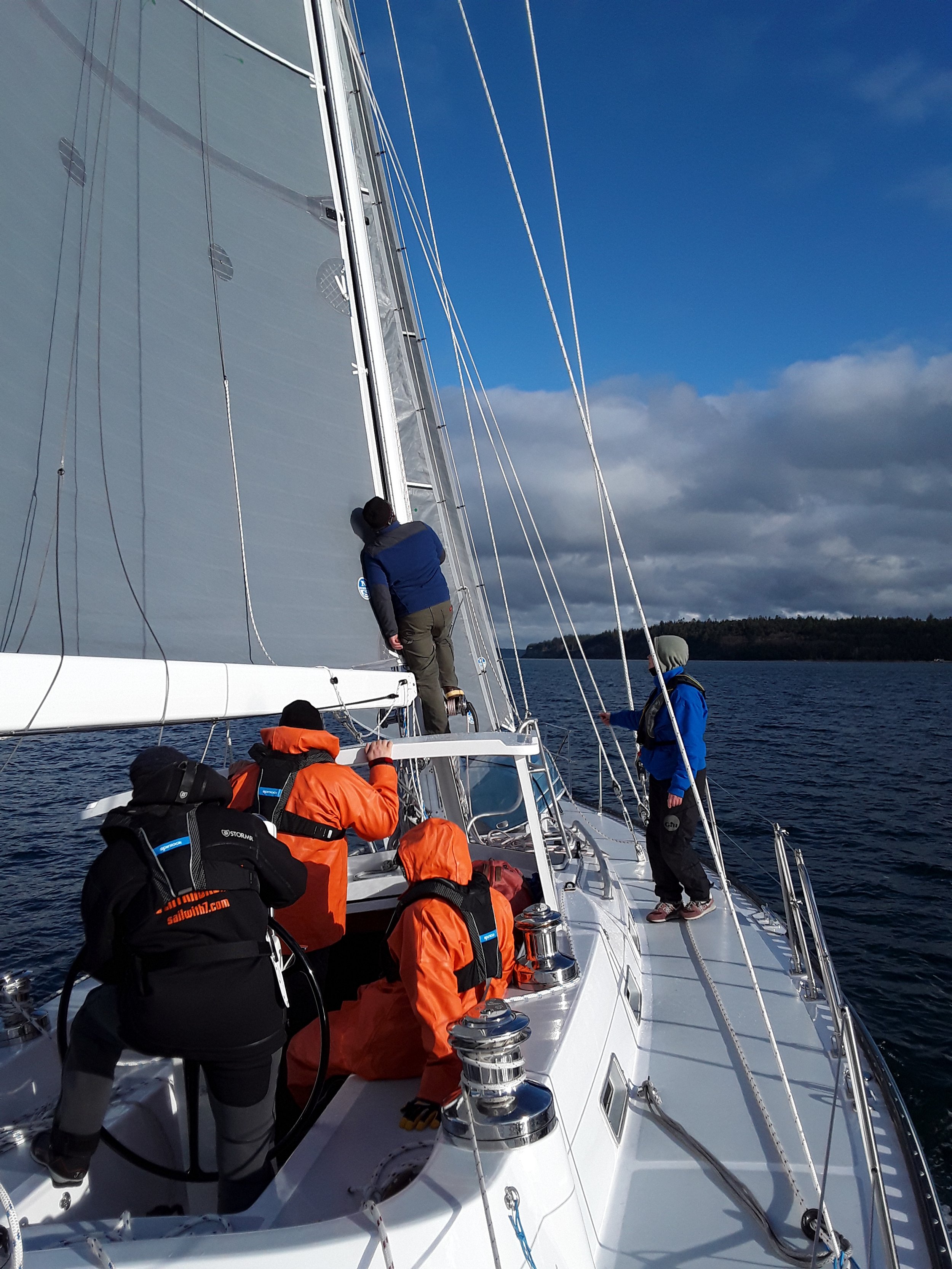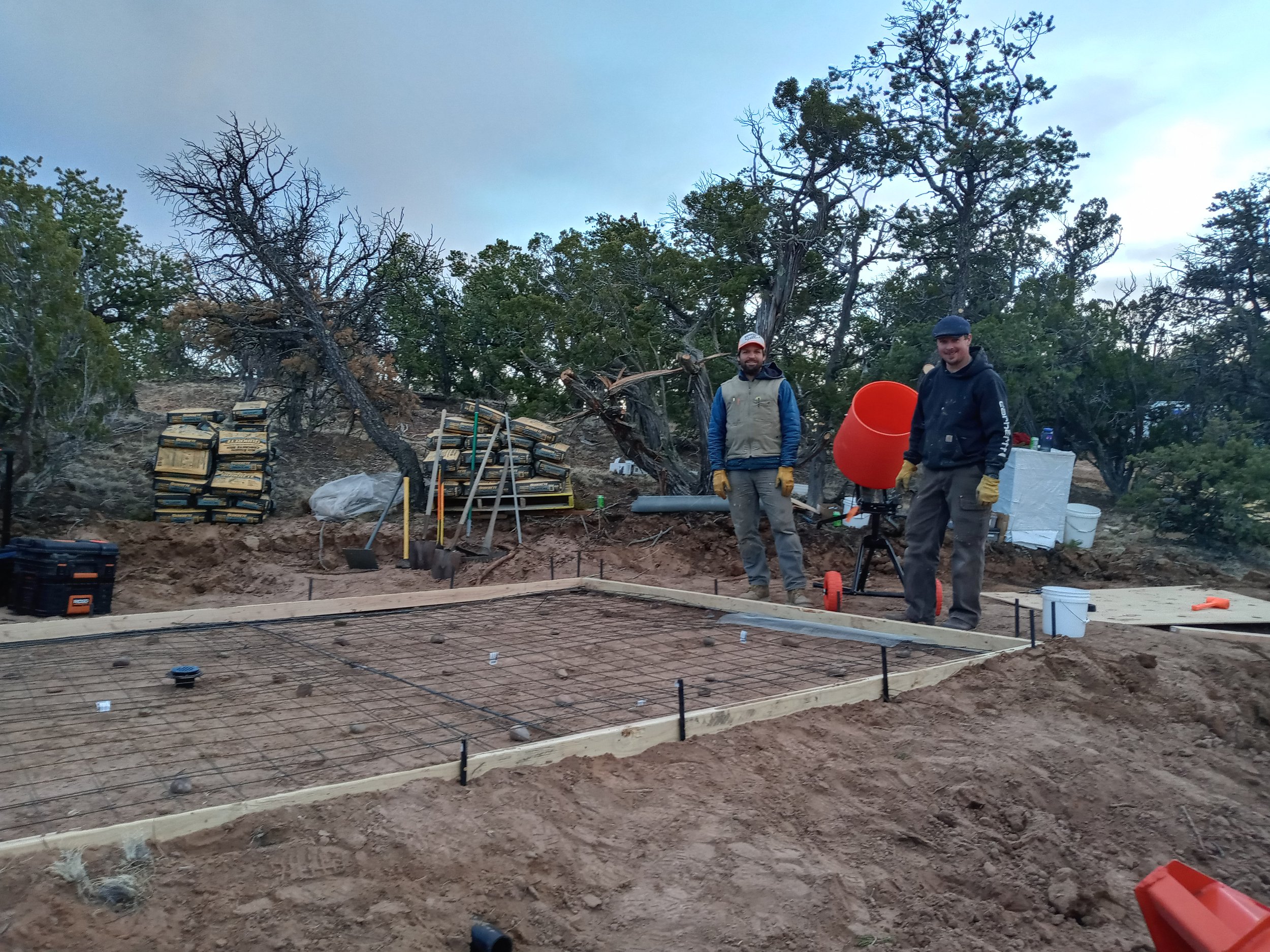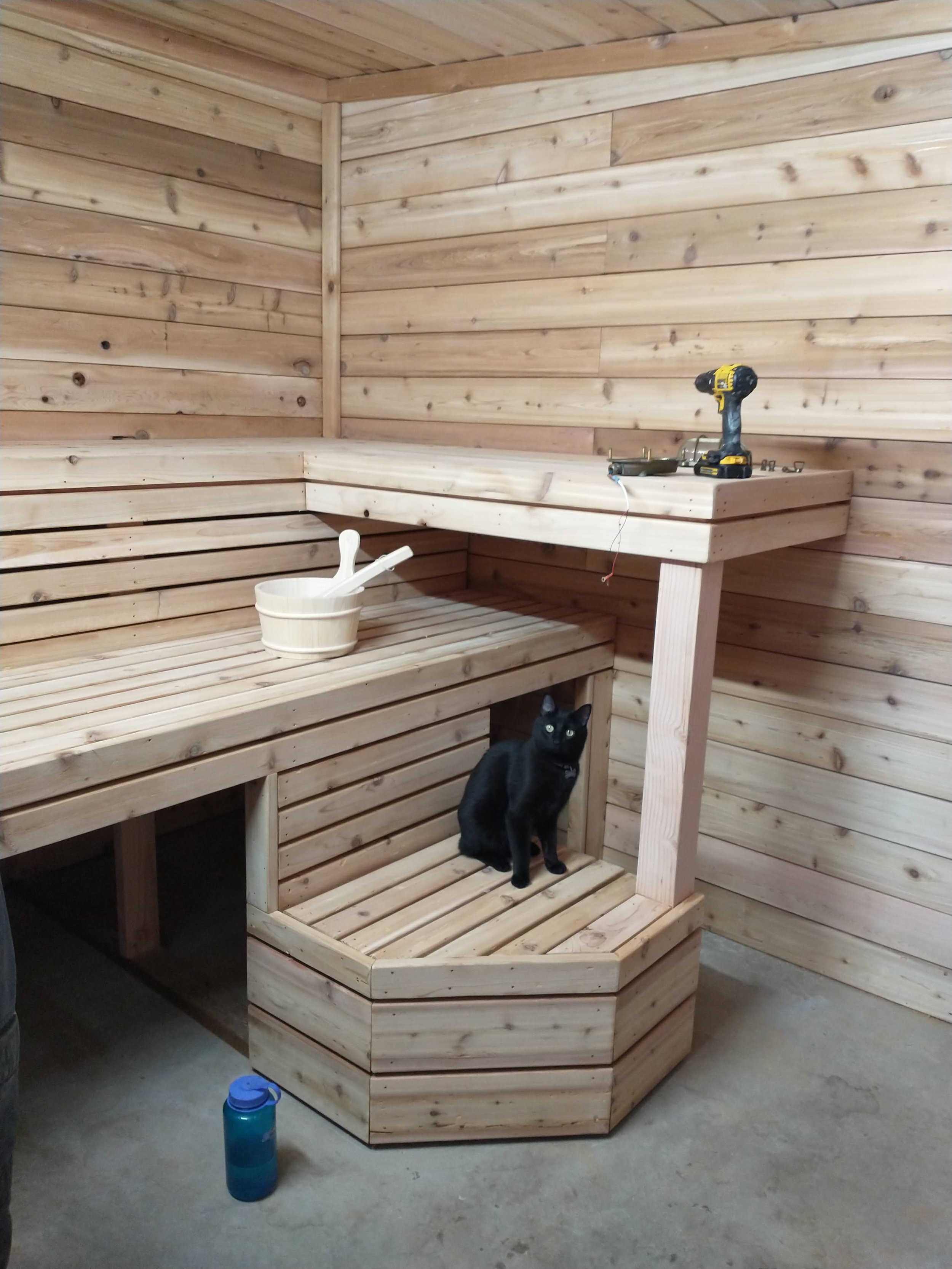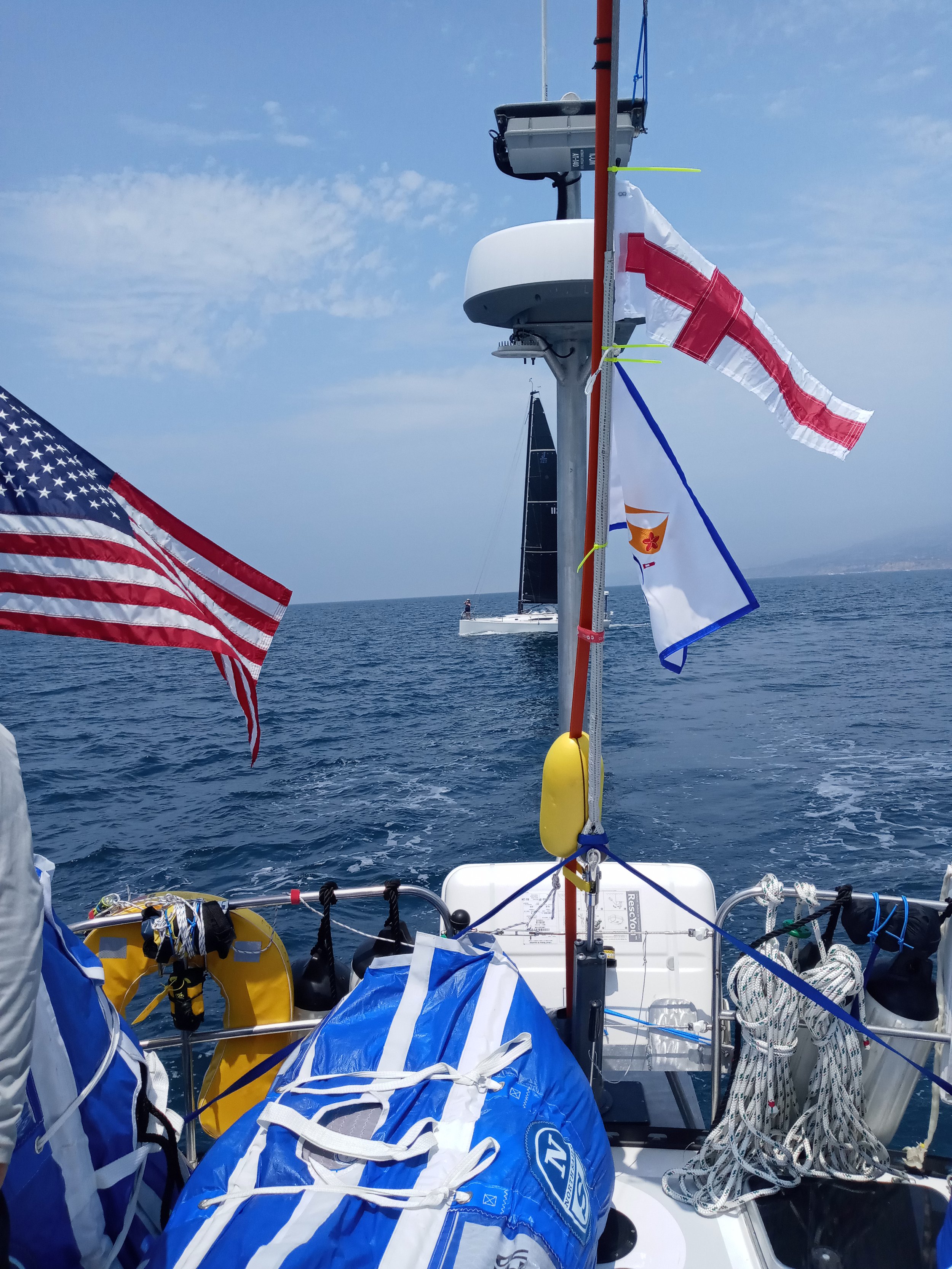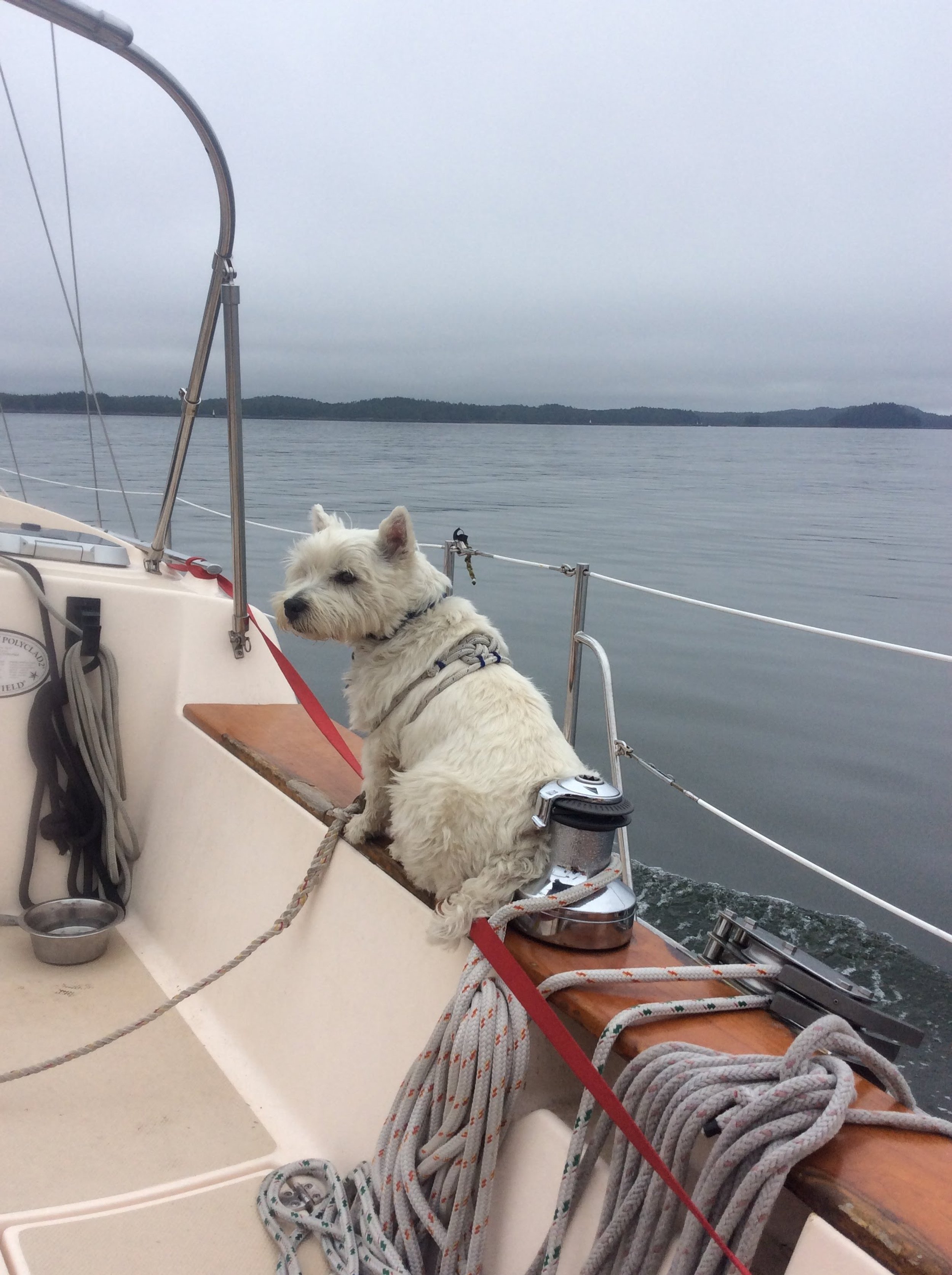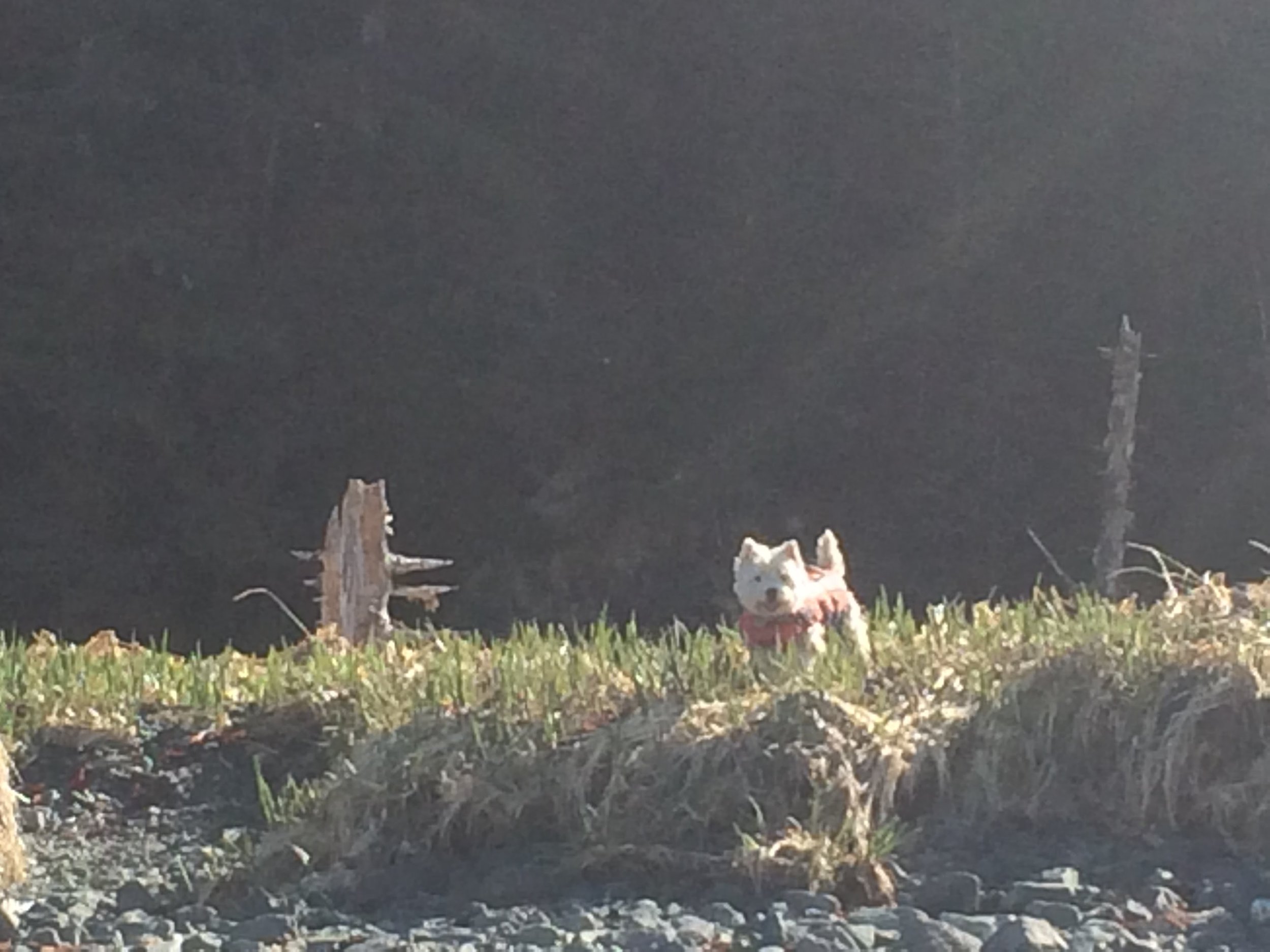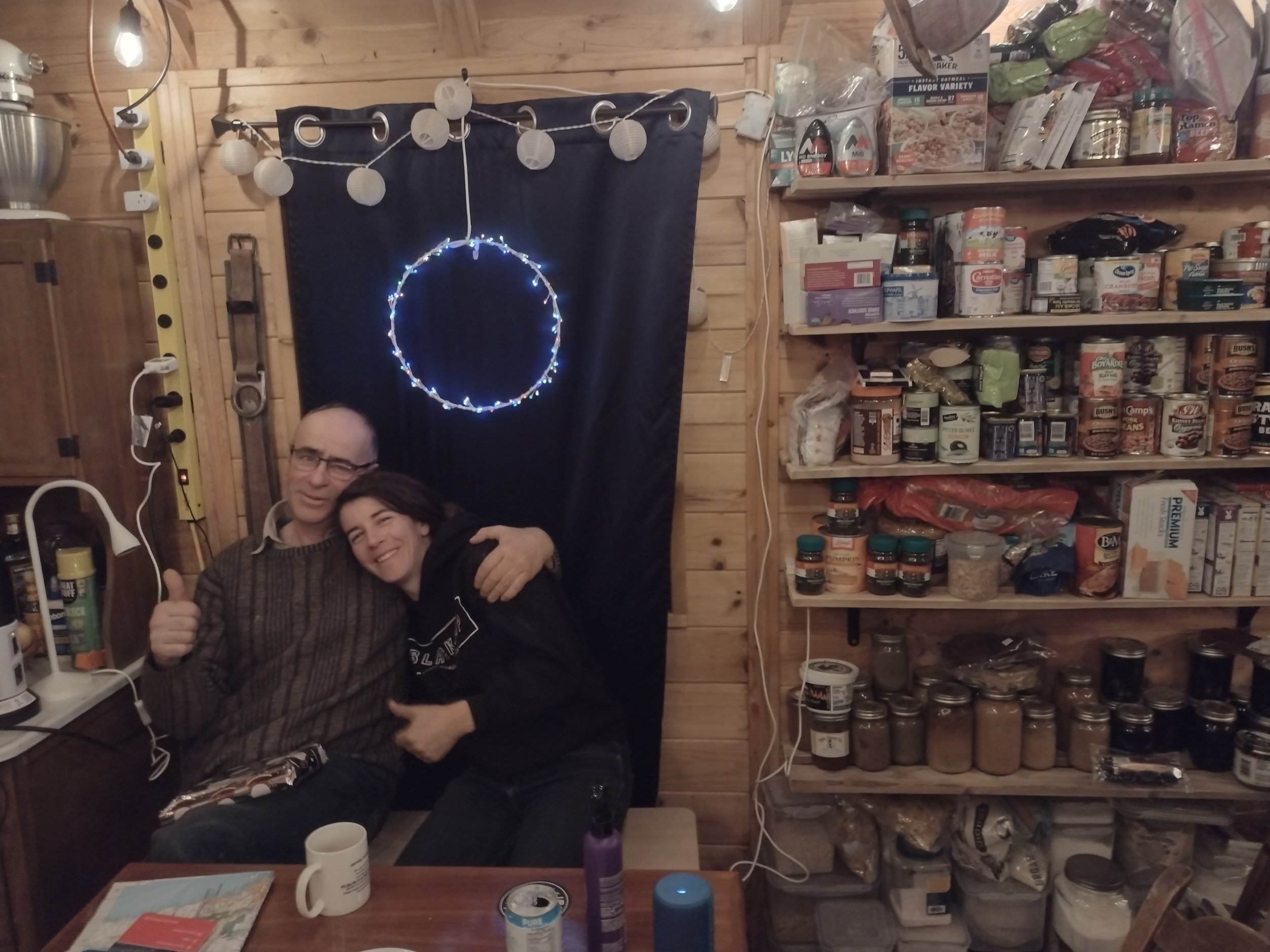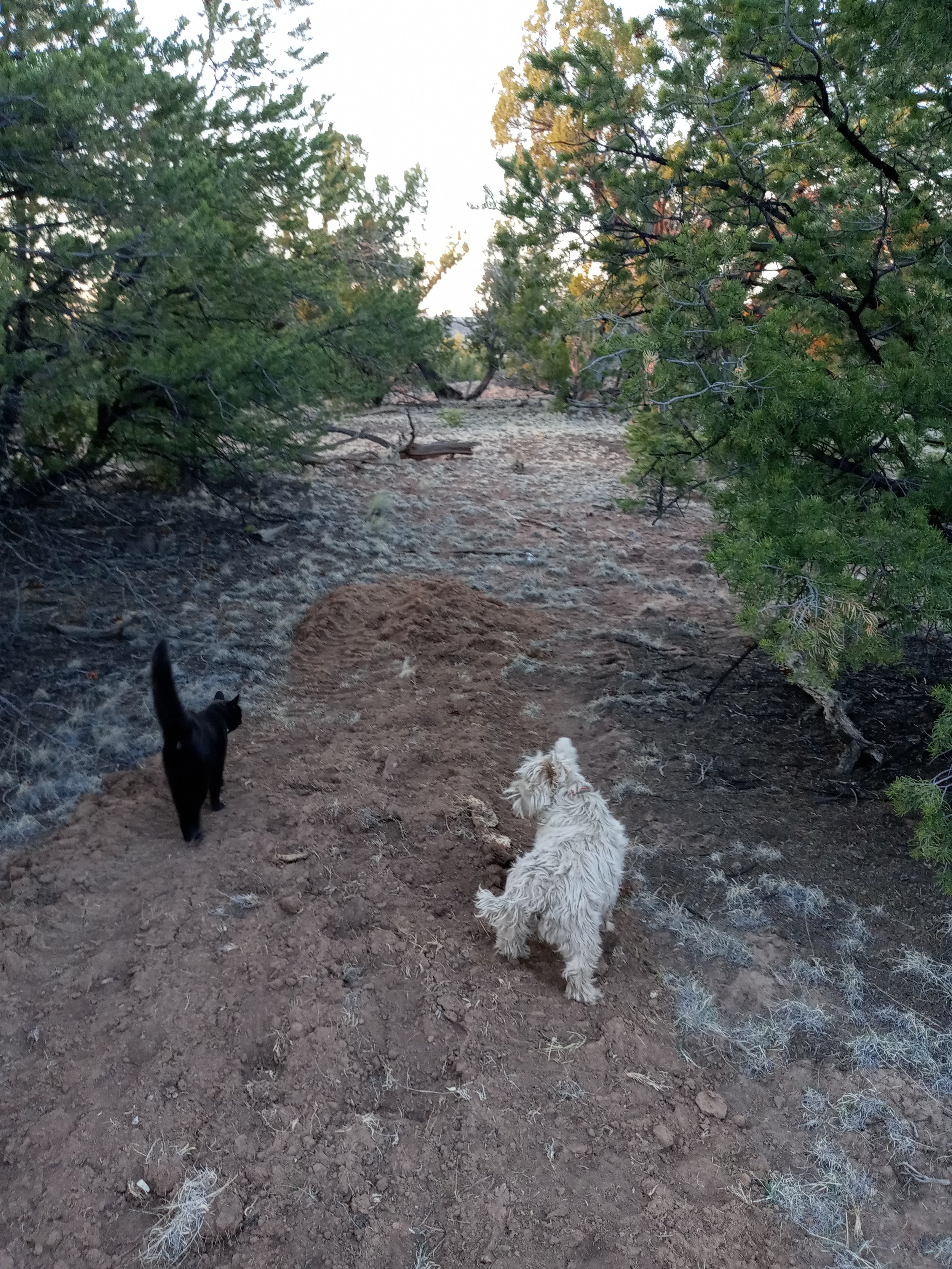New Year’s last year found us preparing to depart Washington to make our move to New Mexico.
An older couple stopped by the week before we moved (about January 20th) to take pictures of the tugboat that we had moved to the property the year before. Jesse got to talking with them and they ultimately bought the boat and the land under it.
The week before that, we wrapped up our re-fit of SV Mikmaks, the very challenging two-and-a-half-year refit project. We splashed her at the beginning of January, did some test sailing to tune the new rig and commissioned all the systems. In anticipation of entry in the Transpac Yacht Race (more on that later) Mikmaks was measured and outfitted for offshore, Category 1 ocean racing.
The rating process was lengthly. At one point, Samantha and I were hanging on to the end of the boom, suspended over the water, along with water jugs and propane cylinders, weighing down the boom end for the measurement process. (Used to calculate the righting moment of the boat.)
We hauled Mikmaks back out of the water at the end of January and tucked her away for our return in late April.
Samm had already taken the horses to Arizona to a boarding facility close to our place in New Mexico, so we didn’t have to worry about them while we moved.
Then we loaded up our tools and household things, filling a big U-Haul, our gooseneck trailer and our little tool trailer. With the help of Justin Waite and Jason Wilson, we bombed the highway, down the California coast, then across to our new place in the mountains of New Mexico, which consisted of a dry cabin and a composting outhouse.
Arrangements had been made for two 40’ shipping containers to be delivered on site the week we arrived. The plan was to set up our workshop while we built infrastructure and to secure things when we are sailing. But Container One, the company we purchased the containers from, did not hold their end of the deal and could not supply the boxes. Turns out they were taking payments for containers they didn’t have in stock yet, and when the supply ran short, they didn’t have anything to deliver. Jesse left a review titled “Should be called Container Zero.”
The shipping containers never arrived. We unloaded our U-Haul, packed up what we could in the horse trailer and made the best of it. At least it was dry, and thanks to the high desert climate, no dew formed on anything overnight.
Our first priority upon arrival was to build our sauna. This building has been on our wish list since we met. We designed a fairly large sauna, with an attached change room/guest room. It was to serve as our bathhouse and guest accommodation.
Our friends from Show Low said the place looked like a cargo plane crashed into our mountain. It was quite a hustle keeping things dry and un-damaged. Container One is on the Naughty list…
After a couple planning evenings, Jason made a materials list and we put the gooseneck to work hauling building supplies.
We hand poured the 12 x 16 slab after leveling a step on the hill, with a nice view and got to work. Jason spearheaded the project, while we battled the elements.
The snow began to fall a day after we had poured the slab, just before we started on the framing of the sauna building.
I was also able to cut in a circle drive and do some planning for our shop.
The sauna turned out great. Our friends from Show Low came to help insulate and get the roof on it. Jason worked tirelessly up until the day he left. Samm and I finished the guest room after Jason left and thankfully a storage unit came available.
We were able to get everything into storage just days before my class in Florida began. What class? I signed up for a mega-yacht captain’s course a few months earlier, thinking that we would have ample time to move before the course started. I needed to be finished before getting back on Mikmaks. Simple, right?
Our plan was to drive together, towing the horses to Florida, but time would not allow. So I flew to Fort Lauderdale and began my 200 Ton Unlimited Master Of Yachts class. Samm dropped me off at the Albuquerque airport, horse trailer in tow. She made the 2000-mile trip with two horses and my motorcycle solo. I used the motorcycle to get around in the city.
Samm stayed in Saratoga at a horse facility, where she trained Kadir, a brilliant Arabian gelding we acquired the previous July.
The IYT training course was some of the best I have attended and included a great deal of hands-on vessel operation as well as rigorous testing,
After passing the courses, we drove back to New Mexico together, camping and riding horses a little on the way.
Here we are in Roswell, getting a ride on a tiny wagon with tiny donkeys pulling it. Roswell lives up to its reputation as the alien capital of the USA.
Once we got home, we boarded the horses and flew to the Bahamas. Our friends Dan and Marcia had been trying to organize a sailing catamaran cruise for years and it finally worked out. There were extra hoops to jump through but all in all it was not to challenging and we had a great trip, met great people and spent hours upon hours in that warm blue water.
On the way home from the Bahamas, I flew to Annapolis, where I donated a week to Ocean Research Projects, making repairs and welding on Matt Rutherford’s new arctic research vessel. Then I took a flight to Michigan where my good friend Nick brought me up to speed on some more celestial navigation techniques.
My goal was to win the Celestial Navigation trophy in the Transpac race to Hawaii and Nick was instrumental in organizing the effort.
It was great to see Nick’s boat progress - he is preparing for a circumnavigation himself on his aluminum junk rigged boat.
Once we got home, time was short, and the sailing season was upon us. We were able to find a house sitter just before we left on our road trip back to Washington via Montana with our awesome cat Figaro and Tico the adventure dog. They were veteran road trippers by this time having done the Florida round trip and the move down to Pie Town. Samm rode Cleo to the pie shop in town.
When we got to Washington, I flew Tico to Isaac in Alaska for dog sitting and Figaro went to Samm’s brother Devon in Seattle. They have two young kids and the whole family loved having Figaro stay.
Mikmaks was splashed straight away and following a couple small fabrication projects, we were in the water, tuning the rig, and on our way to California.
Every system on the boat was new and specially designed. The shakedown cruise to San Francisco yielded only a few issues.
Continuing down the coast, we participated in a couple races and broke in some crew for the Transpac race. We were 20 minutes late for our start on the first race, deciding to do a loop around Alcatraz first.
San Pedro California was our stop for a while. We spent a month there, joined a local gym, prepared the boat and provisioned for the race to Hawaii.
The race to Hawaii was a success, in that we finished, in good time, with no injuries and the boat intact. This was not the case for all boats. We were the only boat in the race, with a hard tender on the foredeck, full water, full fuel and all equipment required for global sailing. So, we were not fast, but we were seaworthy in every aspect. We didn’t expect to be competitive, and we were delighted to not arrive last in Hawaii. Our crew got better and better as the race progressed and we really had the boat dialed in by the time we arrived in Honolulu.
I turned in my navigation packet and after the judges reviewed all competitors, I was awarded the Celestial Navigation Trophy. A nice win for Mikmaks. Without the help of the crew, recording speed, time and heading changes this would not have been possible.
Racing breaks things, so we found ourselves with a list to repair in Hawaii. Namely some steering gears we wore out on the way over. We spent 5 weeks in Honolulu, berthed at the lovely Waikiki Yacht Club.
As luck would have it, we met the son of a famous horse trainer there and taught him how to sail. I ended up on the Warwick Schiller podcast and Tyler his son helped us get our podcast going.
Sad news came to us in Hawaii that back in Seattle, Figaro suffered a massive aneurism or heart attack and died suddenly, while enroute to the emergency vet. He was so loved and missed by everyone.
With global travel inhibited and the Australia policies so restrictive during Covid, we cancelled our plans to sail to Australia for the Sydney Hobart race and sailed back to San Pedro.
This was my favorite passage of the year. We settled in and just sailed the boat. Speed was no longer the priority, and I was able to take the time and teach Jeremy, Justin’s son, how to navigate by the stars. He was able to get an astronomy credit for his homeschool program which was even better. After 23 days at sea, we arrived back into the Port of Los Angeles in San Pedro.
When we arrived in San Pedro, I flew out immediately to pick up Justin’s truck and visit my Mom. She had surgery the day after we arrived, so it was fortunate we were able to be on land and visit with her in Colorado. When we left, she was recovering well from her surgery.
We stopped back in Pie Town to check on the place and chat with our house sitter on the way back to California.
When we arrived back in California, Claire, Justin’s wife joined us, and all of the Mikmaks crew went to Disneyland. A first for Samm and I. Claire booked tickets for two days so we could see the whole place – there are two theme parks there – the original Disneyland and the California Adventure Park. It’s not called the happiest place on earth for nothing. We had a great time.
I called mom and she was home with friends over. She sounded good. But a few days later I got the call that she had passed away.
Samm and I flew to Colorado and the end of sailing season trips were cancelled.
All my sisters came as well. We spent 2 weeks sorting out all the details. It was a tough time, but good for us kids. Now that both our parents have passed, it seemed more important to get along. And that we did.
Samm and I made a few more trips between Colorado and New Mexico, getting our truck and trailer to move things from Mom’s house.
Driving home from the funeral, Isaac called with the news that Tico was sick and getting worse. His cough from late August turned into a massive tumor, despite multiple vet visits and medications.
Samantha flew to Fairbanks where she had just a couple days with Tico before he died. He was the best dog. I could write many books about his travels and adventures. He enjoyed a road trip on his last day, and although weak he remained on his feet and bright. We miss him a lot. Samm did have a nice visit with our good friends Dean and Suz in Alaska, catching up. Suz keeps horses, too, so her and Samm always have lots to talk about.
Things seemed too simple, so I lost my phone about this time…
While Samm was in Alaska I drive the horse trailer to Washington where I got to visit with Steven before he shipped off to Marine Corp boot camp. Isaac flew down as well.
Samm flew back from Alaska to Seattle, and we picked up her horse Henry who had been on lease in Sequim.
With Henry and Samm onboard, we drove the California coast again stopping in San Luis Obispo, where Samm rode Henry in a Hackamore training clinic. I watched and learned a lot. Henry and our new horse Chief stayed in San Luis Obispo, while we headed south to pull Mikmaks out of the water in Ventura.
We got a chance to sail out to Catalina Island and do some hiking. It was quiet, in the off season and was surprisingly normal.
On the way to Catalina, the prop seemed to vibrate more than I remembered. I dove the next day, finding fishing net from the great Pacific Garbage patch on the prop. A reminder of why we carry the gear.
The haul out in Ventura went well and we left the boatyard with all things secure, finally heading home.
We hustled up truck, trailer, horses and Justin’s truck and hit the road the day before Thanksgiving. If you have never driven the freeways of Los Angeles on the day before Thanksgiving, I don’t advise it. But if you do, don’t tow a horse trailer. It took 4 hours to go 100 miles. Generally, people were courteous, and we continue to be amazed at how nice people are in trying circumstances.
We spent Thanksgiving in the San Bernadino National Forest at a horse campground and hiked the trails with the horses.
By the time we got home to Pie-in-the-Sky, winter was breathing down our neck, but I got the dirt work done for the shop before the ground froze.
Jeremy came down to learn a few things and earn some money, while Samm flew to Canada for her sister’s wedding.
Samm made it back mid-month, and our friends from Washington arrived for a visit. Samm’s dad Jim came to visit for Christmas and our friends from Show Low came as well. A whirlwind of progress ensued during the month of December.
We:
-Painted the cabin floor,
-replaced the propane stove,
-built a countertop with sink,
-laid flooring,
-installed a complete solar power system, wired the cabin for DC and AC lighting/USB charging and a water pump,
-framed the form work for pouring our shop slab,
- improved the driveway,
-tripled the size of the horse corral,
-put our Living Quarters horse trailer up for sale,
- purchased a stock horse trailer,
- rode motorcycles,
- rode horses
and finally got settled in here at home.
2021 was quite the year. It seems like we went everywhere and saw everyone. We suffered losses and enjoyed successes. We are grateful for our work, our friends, our families and this very moment.
Total Mileage:
30000 miles driven on our truck, 10000 of those with horses in tow.
8000 miles of ocean sailing.



